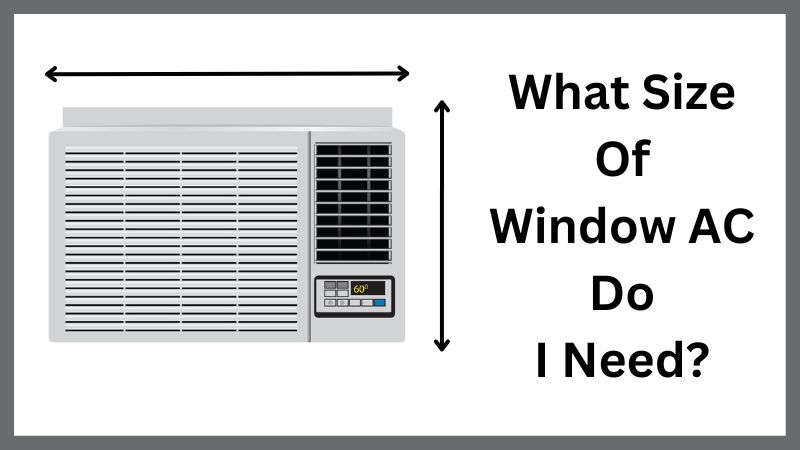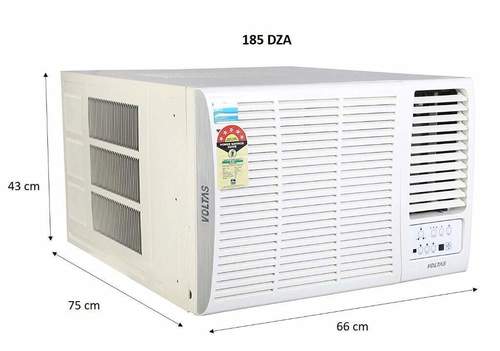Dimensions Of 1.5 Ton Window Ac

Choosing the right air conditioner (AC) involves more than just cooling capacity. Understanding the physical dimensions of a 1.5 ton window AC is crucial to ensure it fits your window, doesn't obstruct your view excessively, and is suitable for your room size. This guide provides a comprehensive overview of the dimensions you should consider and how they impact your decision.
What Does "1.5 Ton" Mean?
Before diving into the physical measurements, let's clarify what "1.5 ton" refers to. This doesn't relate to the AC unit's weight! Instead, it represents the cooling capacity of the air conditioner. A 1.5 ton AC can remove 18,000 British Thermal Units (BTUs) of heat per hour. BTU is a unit of energy; the higher the BTU rating, the more cooling power the AC possesses. This capacity is generally suitable for rooms ranging from 250 to 400 square feet, depending on factors like insulation, ceiling height, and sun exposure.
Think of it like this: a 1.5 ton AC is like a moderately powerful engine in a car. It can effectively cool a medium-sized room without being overkill or underpowered.
Key Dimensions of a 1.5 Ton Window AC
Several dimensions are critical when considering a 1.5 ton window AC. Here's a breakdown of each:
1. Width
The width is the most important dimension when considering window placement. It determines whether the AC unit will fit within your window frame. Standard window AC widths for 1.5 ton units typically range from 24 to 28 inches (61 to 71 cm). However, there can be variations across different brands and models. Always measure your window opening *before* purchasing an AC unit.
Some models are specifically designed with adjustable side panels (sometimes called "accordion panels") to accommodate varying window widths. These panels extend outwards to fill the gaps between the AC unit and the window frame, providing insulation and support.
2. Height
The height of the unit affects how much of your window view will be obstructed. 1.5 ton window ACs generally have heights ranging from 14 to 18 inches (36 to 46 cm). Consider the height of your window opening and how much of your view you're willing to sacrifice. Taller units may block more light and your view. Ensure the height allows for proper installation and secure mounting without stressing the window frame.
3. Depth
The depth, or how far the unit extends into the room, is another factor. Deeper units can protrude further into your living space, potentially affecting furniture placement and traffic flow. Typical depths range from 20 to 25 inches (51 to 64 cm). Keep in mind that some portion of the AC will also extend outside of the window. Consider the available space both inside and outside of your window.
Think of the depth as how much "legroom" the AC needs both inside and outside your window.
4. Weight
While not a dimension in the traditional sense, weight is a crucial factor. 1.5 ton window AC units can be quite heavy, often weighing between 60 and 80 pounds (27 to 36 kg). This weight puts stress on your window frame and requires secure mounting. Ensure your window frame is strong enough to support the AC unit's weight. It's *highly recommended* to have assistance during installation to avoid injury and ensure proper support. Many units *require* additional external support brackets.
Impact of Dimensions on Performance and Aesthetics
The dimensions of your AC unit don't just affect whether it fits in your window; they also influence its performance and appearance.
- Airflow: Larger units, while potentially blocking more view, may have more powerful fans and better airflow distribution. However, proper placement is key.
- Aesthetics: The size and shape of the AC unit directly impact the room's aesthetics. Consider the unit's color and design to ensure it complements your decor.
- Noise Level: While not directly dictated by dimensions, larger units *can* sometimes generate slightly more noise, depending on the motor and fan design. Check the decibel (dB) rating before purchasing.
- Energy Efficiency: The dimensions *can* indirectly influence energy efficiency. A properly sized unit (cooling capacity) for your room is more energy-efficient than an oversized or undersized unit.
Factors to Consider Before Buying
Before purchasing a 1.5 ton window AC, consider these critical factors:
- Window Size: Measure the width, height, and depth of your window opening *accurately*. Don't rely on estimations.
- Window Type: Different window types (e.g., double-hung, casement) may require different mounting hardware and installation methods.
- Window Frame Strength: Assess the strength of your window frame to ensure it can support the AC unit's weight. If in doubt, consult a professional.
- Room Size and Layout: Ensure that a 1.5 ton AC is the appropriate size for your room. Consider factors like insulation, sun exposure, and ceiling height.
- Power Outlet Availability: Confirm that you have a nearby electrical outlet with the correct voltage and amperage. 1.5 ton AC units typically require a dedicated circuit.
- Local Climate: If you live in a particularly hot or humid climate, you might consider a unit with a slightly higher BTU rating.
- Installation Requirements: Determine whether you can install the AC unit yourself or if you need professional assistance. Remember that safety is paramount.
Measuring Your Window for a Window AC
Accurate window measurements are essential for a successful AC installation. Follow these steps:
- Width: Measure the width of the window opening from the inside of the frame on one side to the inside of the frame on the other side. Measure at the top, middle, and bottom of the window and use the smallest measurement.
- Height: Measure the height of the window opening from the top of the sill to the top of the window frame.
- Depth (for external overhang): Measure the distance from the window to any obstruction outside (e.g., a balcony overhang). The external part of the AC needs adequate airflow.
Write down all measurements and bring them with you when shopping for an AC unit. Compare these measurements with the AC unit's dimensions listed in the product specifications. Allow for a small margin of error (e.g., 1/2 inch) to ensure a comfortable fit.
Alternatives to Window ACs
If a window AC isn't suitable for your situation (e.g., due to window type, size, or lack of a suitable window), consider these alternatives:
- Portable ACs: These units are on wheels and can be moved from room to room. They require venting through a window using a hose.
- Ductless Mini-Split Systems: These systems consist of an indoor unit and an outdoor compressor. They are more energy-efficient and quieter than window ACs but require professional installation.
- Central AC: This is a whole-house cooling solution that uses ductwork to distribute cool air. It's the most expensive option but also the most efficient and effective.
Conclusion
Understanding the dimensions of a 1.5 ton window AC is crucial for a successful purchase and installation. By carefully measuring your window, considering the AC unit's dimensions, and evaluating your needs, you can choose the right AC unit that provides efficient cooling and fits your space perfectly. Remember to prioritize safety during installation and consult a professional if needed. Choosing the right AC goes beyond just BTU capacity; considering the physical size is just as important.










